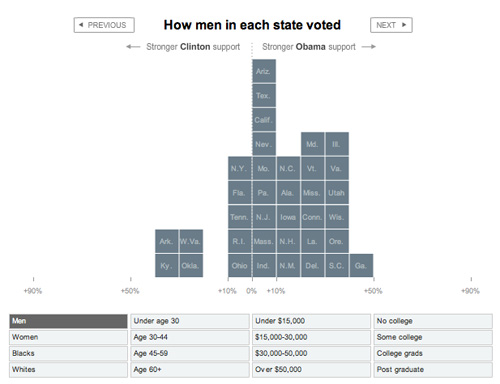Dropping Statistics for Knowledge
My favorite part of this week’s Seminar on Innovative Approaches to Turn Statistics into Knowledge (aside from its comically long name) was the presentation from Amanda Cox of The New York Times. She showed three particular projects which are a little further up the complexity scale as compared to a lot of the work from the Times, and much more like the sort of numerical messes that catch my interest. The three serve are also a great cross-section of Amanda’s work with her collaborators, so I’m posting them here. Check ’em out:
“How Different Groups Voted in the 2008 Democratic Presidential Primaries” by Shan Carter and Amanda Cox:
“All of Inflation’s Little Parts” by Matthew Bloch, Shan Carter and Amanda Cox
And finally, “Turning a Corner?” which is perhaps the most complicated of the bunch, but gets more interesting as you spend a little more time with it.




